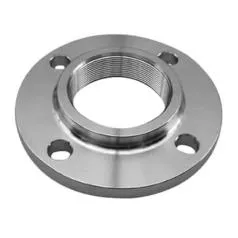-
Cangzhou Yulong Steel Co., Ltd.
-
Phone:
+86 13303177267 -
Email:
admin@ylsteelfittings.com
- English
- Arabic
- Italian
- Spanish
- Portuguese
- German
- kazakh
- Persian
- Greek
- French
- Russian
- Polish
- Thai
- Indonesian
- Vietnamese
- Zulu
- Korean
- Uzbek
- Hindi
- Serbian
- Malay
- Ukrainian
- Gujarati
- Haitian Creole
- hausa
- hawaiian
- Hebrew
- Miao
- Hungarian
- Icelandic
- igbo
- irish
- Japanese
- Javanese
- Kannada
- Khmer
- Rwandese
- Afrikaans
- Albanian
- Amharic
- Armenian
- Azerbaijani
- Basque
- Belarusian
- Bengali
- Bosnian
- Bulgarian
- Catalan
- Cebuano
- China
- China (Taiwan)
- Corsican
- Croatian
- Czech
- Danish
- Esperanto
- Estonian
- Finnish
- Frisian
- Galician
- Georgian
- Kurdish
- Kyrgyz
- Lao
- Latin
- Latvian
- Lithuanian
- Luxembourgish
- Macedonian
- Malgashi
- Malayalam
- Maltese
- Maori
- Marathi
- Mongolian
- Myanmar
- Nepali
- Norwegian
- Norwegian
- Occitan
- Pashto
- Dutch
- Punjabi
- Romanian
- Samoan
- Scottish Gaelic
- Sesotho
- Shona
- Sindhi
- Sinhala
- Slovak
- Slovenian
- Somali
- Sundanese
- Swahili
- Swedish
- Tagalog
- Tajik
- Tamil
- Tatar
- Telugu
- Turkish
- Turkmen
- Urdu
- Uighur
- Welsh
- Bantu
- Yiddish
- Yoruba

Nov . 12, 2024 22:14 Back to list
pipe floor flange
Understanding Pipe Floor Flanges A Comprehensive Guide
In the realm of industrial piping systems, the importance of connecting components securely and efficiently cannot be overstated. One of the key elements in these systems is the floor flange, particularly utilized in conjunction with pipes. Understanding the function, types, and installation of pipe floor flanges is essential for engineers, technicians, and anyone involved in plumbing or industrial piping systems.
What is a Pipe Floor Flange?
A pipe floor flange is a flat piece of metal, typically circular, that serves as a connection point for a pipe to be mounted securely to the floor. This component is designed to accommodate mechanical stresses and strains, providing stability to the piping system. Floor flanges come in various sizes and materials, including stainless steel, carbon steel, and PVC, depending on the application and environmental conditions.
Types of Pipe Floor Flanges
There are several types of floor flanges, each suited for different applications
1. Weld Neck Flanges These flanges have a long neck that helps in reducing stress concentration, making them ideal for high-pressure applications. They are commonly welded to pipes, providing a robust connection.
2. Slip-On Flanges These flanges are slipped over the pipe and then welded in place. They are easier to align and install but are less suited for high-pressure applications.
3. Threaded Flanges Designed to be screwed onto the pipe, these flanges are ideal for systems where welding isn’t feasible. However, they are generally used only in low-pressure applications due to their vulnerability to leaks.
4. Blind Flanges These flanges have no opening, allowing them to seal off ends of piping systems, making them useful for maintenance access points.
pipe floor flange

5. Socket Weld Flanges These flanges involve inserting the pipe into the flange and then welding around the joint. They are advantageous in high-pressure environments and provide a smooth bore for better flow.
Installation Considerations
Proper installation of pipe floor flanges is vital for the integrity of the piping system. The process generally involves
1. Surface Preparation Ensure that both the flange and the mating surface are clean and free from debris or rust, which could compromise the seal.
2. Alignment During installation, align the flange with the pipe to ensure a snug fit without excessive force, which can cause stress and potential failure.
3. Bolting Use appropriate bolts and nuts to secure the flange. It’s essential to follow the recommended torque specifications to prevent over-tightening, which can warp the flange or damage the pipe.
4. Testing After installation, testing for leaks at joints and connections should be performed. This verification step is crucial to ensure that the system operates efficiently and safely.
Conclusion
Pipe floor flanges play a critical role in maintaining the integrity and functionality of industrial piping systems. Understanding the various types, their applications, and proper installation techniques can significantly enhance the reliability of plumbing installations. As industries continue to evolve, ensuring that these components are used correctly will lead to safer and more efficient operations. By investing time in understanding and implementing the right flange solutions, professionals can contribute to the overall success of maintenance and operational efficiency in their facilities.
Latest news
-
ANSI 150P SS304 SO FLANGE
NewsFeb.14,2025
-
ASTM A333GR6 STEEL PIPE
NewsJan.20,2025
-
ANSI B16.5 WELDING NECK FLANGE
NewsJan.15,2026
-
ANSI B16.5 SLIP-ON FLANGE
NewsApr.19,2024
-
SABS 1123 FLANGE
NewsJan.15,2025
-
DIN86044 PLATE FLANGE
NewsApr.19,2024
-
DIN2527 BLIND FLANGE
NewsApr.12,2024
-
JIS B2311 Butt-Welding Fittings LR/SR 45°/90° /180°Seamless/Weld
NewsApr.23,2024











